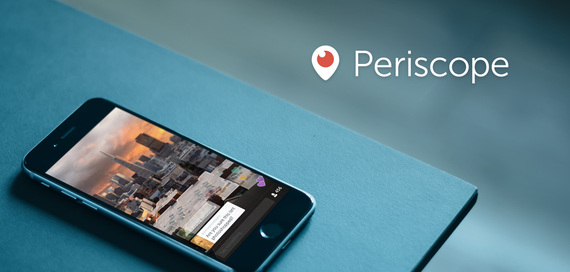New technologies hit the market every day, but a few change the way creative work is being done on a large scale. They allow more people to accomplish what only a few were once able to do. They're beautiful to behold, simple to use, and easy to integrate into the workflow of creatives across the globe. They help creative people be better at what they do. And - perhaps most importantly - they're accessible.
With that in mind, here are the five technologies we've seen come into their own over the last year, that are fundamentally changing the way creatives work.
1. Virtual reality. As a society, we've dreamt of an "alternate sensory experience" for decades, but it's only recently become a reality. In 2015 the technology became more refined, and suddenly it was obvious to everyone: new possibilities were now open in storytelling, building, gaming - really anything that involves creating a new world for people to explore.
Who's using virtual reality in creative work? Right now, the technology has the most relevance in the world of gaming. With Oculus - after being snapped up by Facebook for a cool $2 billion - emerging as a VR leader, gamers and game developers have latched on to VR the most (or most obviously), creating full-body 3D experiences. Oculus Rift, Playstation VR, and HTC Vive headsets are all poised to hit the market this year and consumer adoption will only drive more creative potential.
In other industries, last year Google and The New York Times rolled out a simple cardboard virtual reality headset, opening up new possibilities in how journalists tell stories and invite readers to engage with them. And builders and architecture firms can showcase projects and spaces still under development: Cadsoft, the software developer for builders, just introduced its new application that lets people walk around a space before it's created.
2. Live-streaming apps. Meerkat and Persicope both launched live-streaming video apps in 2015, to much hype, and it didn't take long before marketers and influencers, from huge brands to individual celebrities, were figuring out how to make it work for them. The appeal of both apps is how they give brands new opportunities to interact with their fans in real-time, catching their attention through sound and motion.
Brands are eating up the opportunity, creating new kinds of advertising and original content unique to the medium. Target used Periscope to give viewers a sneak peak of its Lily Pulitzer collection, which sold out in just a few days, and liquor brand St. Germain created a disappearing ad of sorts, launching a series of racy short films that disappeared after 24 hours called Peep Show, which invited viewers to respond and react in real time. And Taco Bell, not to be outdone by other brands, hosted a mock press conference to promote "Breakfast Defector Day." As new mediums for creative work emerge, creativity is quickly evolving to meet the potential.
3. Predictive analytics. Predictive analytics - which takes data and makes it forward looking - is changing the way advertising and marketing teams are thinking of creative work. The technology is still pretty new, but these sophisticated tools are pushing creatives to use data-fueled insights to create content that's smarter, more relevant, and more likely to produce the results they are looking for - especially in advertising.
But predictive analytics is being used by more than just advertisers. Some creatives are turning data into an art form, like big data company Teradata, which showcased dozens of analytics-turned-visual-art-display at its user conference last fall. "Great insights are more than science, they are an art form... successful companies must create a culture of creativity," the company says on its website. The visualizations - which use data to represent everything from the flow of money between Chinese companies, to classifications of whiskey - are meant to stimulate different parts of the brain to make certain points clearer, Teradata says.
4. Drones. Drones have been around for years now, but it's worth mentioning the ways drone technology revolutionized creative work for filmmakers and other creatives. With newer, sleeker, more affordable drones flooding the market, camera-mounted drones now make possible the kind of aerial photography once afforded by only the biggest studios.
Drone are even more accessible than ever, thanks to companies like KitSplit. The New York-based startup lets creatives and smaller production companies and studios rent out equipment from other users - a sort of "Airbnb for the creative class," according to Forbes.
5. CGI-influenced stop motion animation. Stop motion animation is an old, beautiful, and (increasingly) rare art form that largely fell by the wayside when computer generated animation came about. But Laika, the animation company committed to making stop motion films, is revolutionizing the form by incorporating computer generated images and 3D printing technology into the traditional stop motion process. Animators there use CGI to alter physical figures, then 3D print variations of those forms to film in stop motion, saving time but preserving the stop-motion form.
"I love this art form. What if we can take it and expand what it can do by infusing this craft with technology?" Laika studio founder explained in an interview with Wired. That's the kind of thinking about technology that changes what's possible in creativity. We hope to see more of it in the future, in filmmaking and other realms of art making as well.
---
Technology has always changed the way we do creative work, and it will continue its impact on creativity long after the technologies we name here are a normal part of everyday life. Some say technology is killing creativity, but that could never really happen. Creatives will always seek out new ways to use new tool to push further into their way, opening up endless possibilities.
